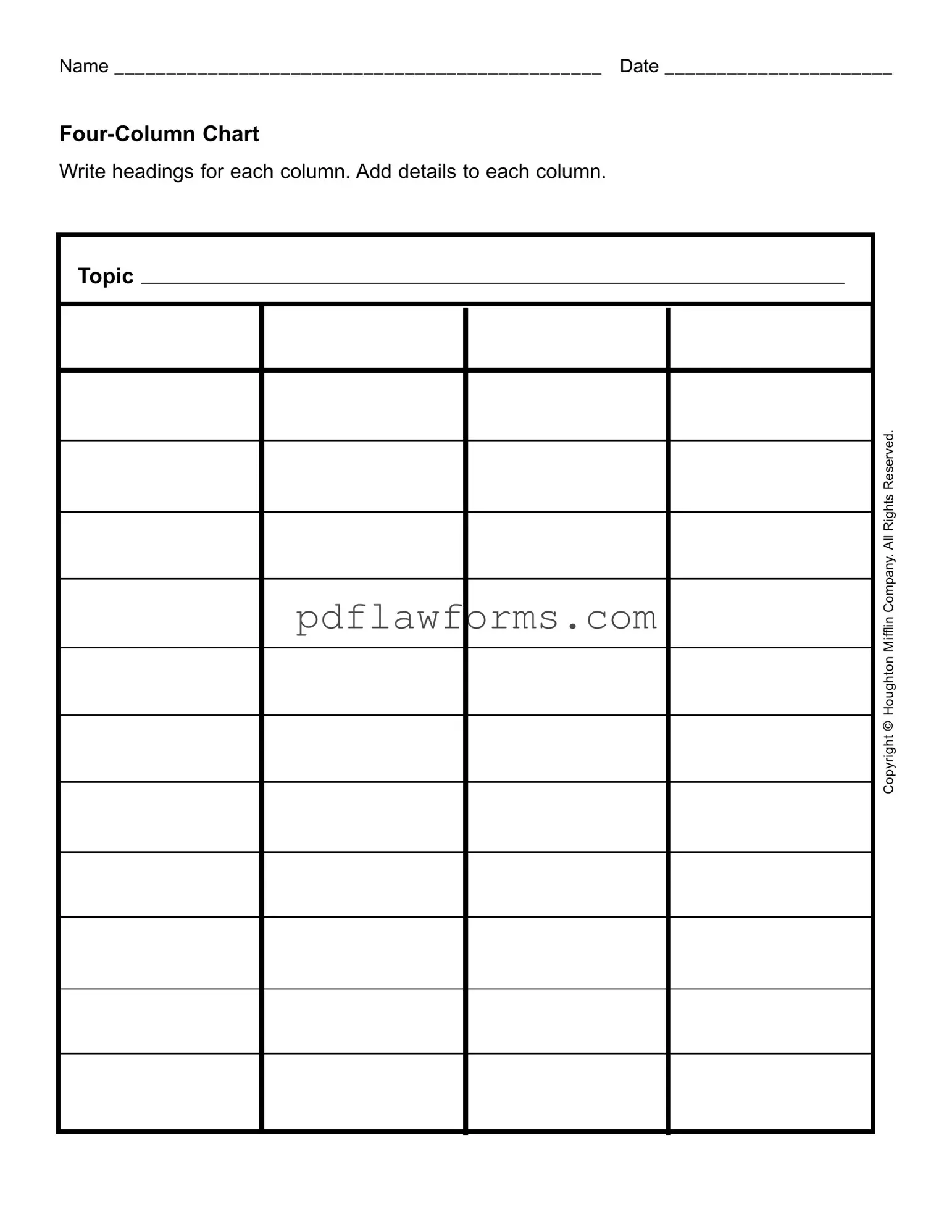Filling out the Four Column Chart form can seem straightforward, but many individuals make common mistakes that can lead to confusion or incomplete submissions. One significant error is failing to provide a clear and concise topic heading for each column. Without specific headings, the information presented may lack clarity, making it difficult for others to understand the context.
Another frequent mistake is neglecting to include the date on the form. This omission can create issues with record-keeping and may result in delays or complications when referencing the document in the future. Always ensure that the date is clearly marked to maintain proper documentation.
Many users also overlook the importance of legibility. Whether filling out the form by hand or digitally, it is crucial that the text is readable. Illegible handwriting or unclear typing can lead to misunderstandings and misinterpretations of the information provided.
In addition, individuals often fail to provide sufficient details in each column. Each section should be filled with relevant and informative content. Vague or incomplete entries can hinder the effectiveness of the chart and may not convey the necessary information to the reader.
Another common error involves organization. Users may mix up the order of information or place details in the wrong columns. This disorganization can make it challenging for others to follow the flow of information, leading to frustration and potential miscommunication.
Many people also forget to review their entries before submission. Skipping this step can result in errors that could have easily been corrected. Taking a moment to double-check the information can save time and prevent issues down the line.
Some individuals might not realize the importance of using consistent terminology throughout the chart. Inconsistent language can create confusion and may lead to misinterpretation of the data. It is essential to maintain uniformity in terms and phrasing.
Additionally, failing to follow any specific instructions provided with the form can lead to errors. Each form may have unique requirements that must be adhered to for proper completion. Ignoring these guidelines can result in incomplete or incorrect submissions.
Lastly, individuals sometimes forget to include their name on the form. This critical piece of information is necessary for identification and accountability. Omitting it can lead to complications, especially in situations where multiple forms are submitted.
Being aware of these common mistakes can significantly improve the accuracy and effectiveness of the Four Column Chart form. Taking the time to ensure each section is completed thoroughly and correctly is essential for effective communication and record-keeping.
